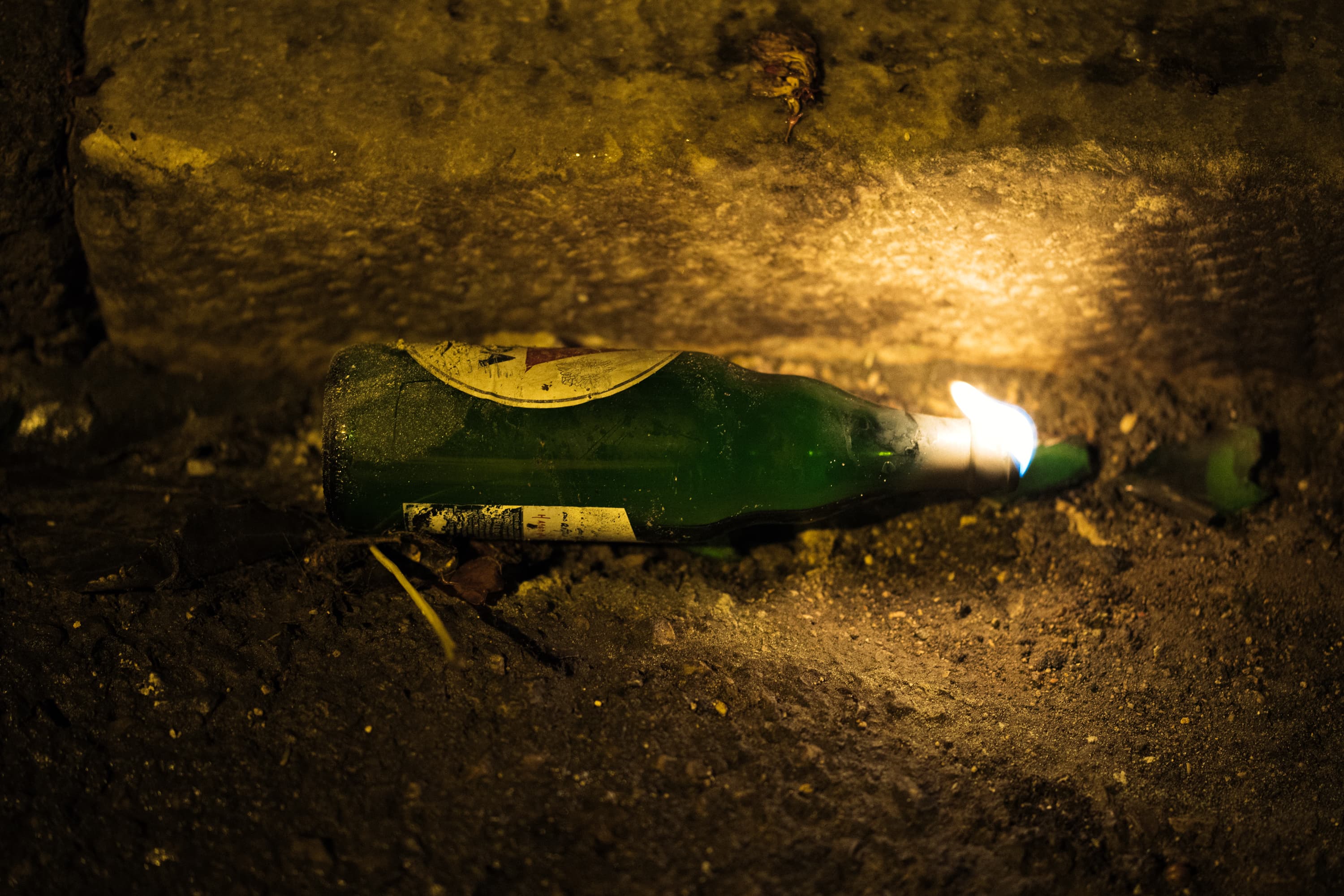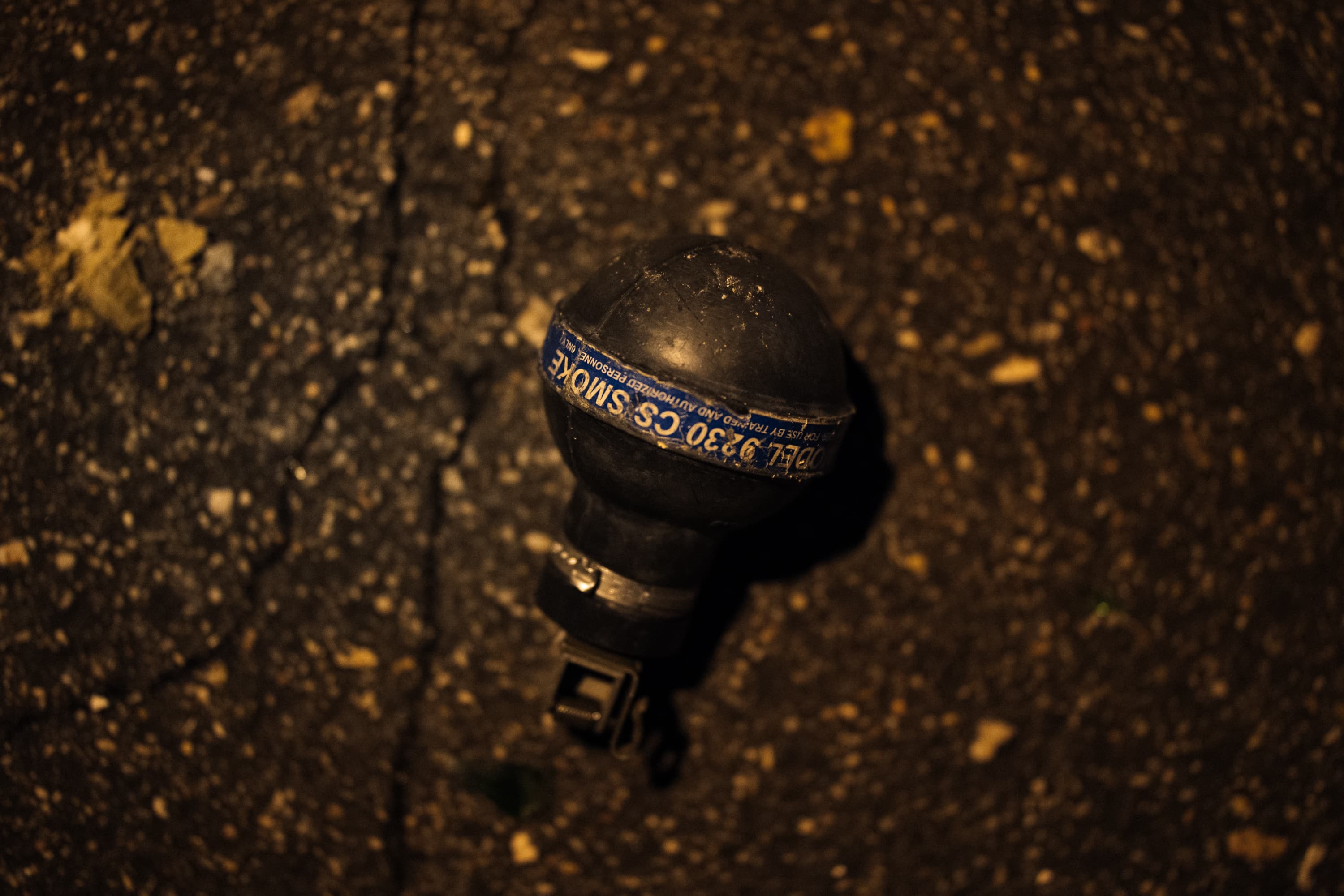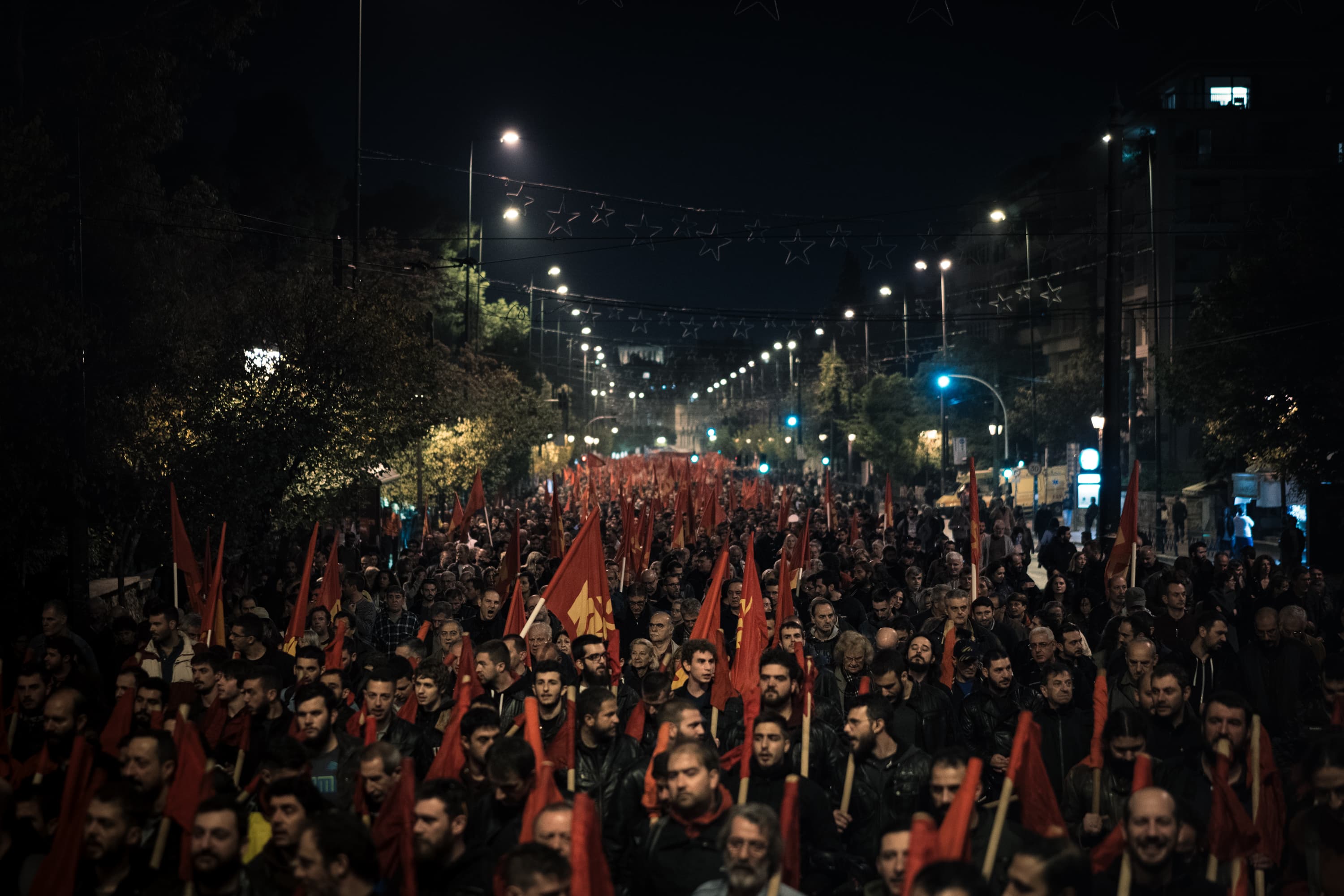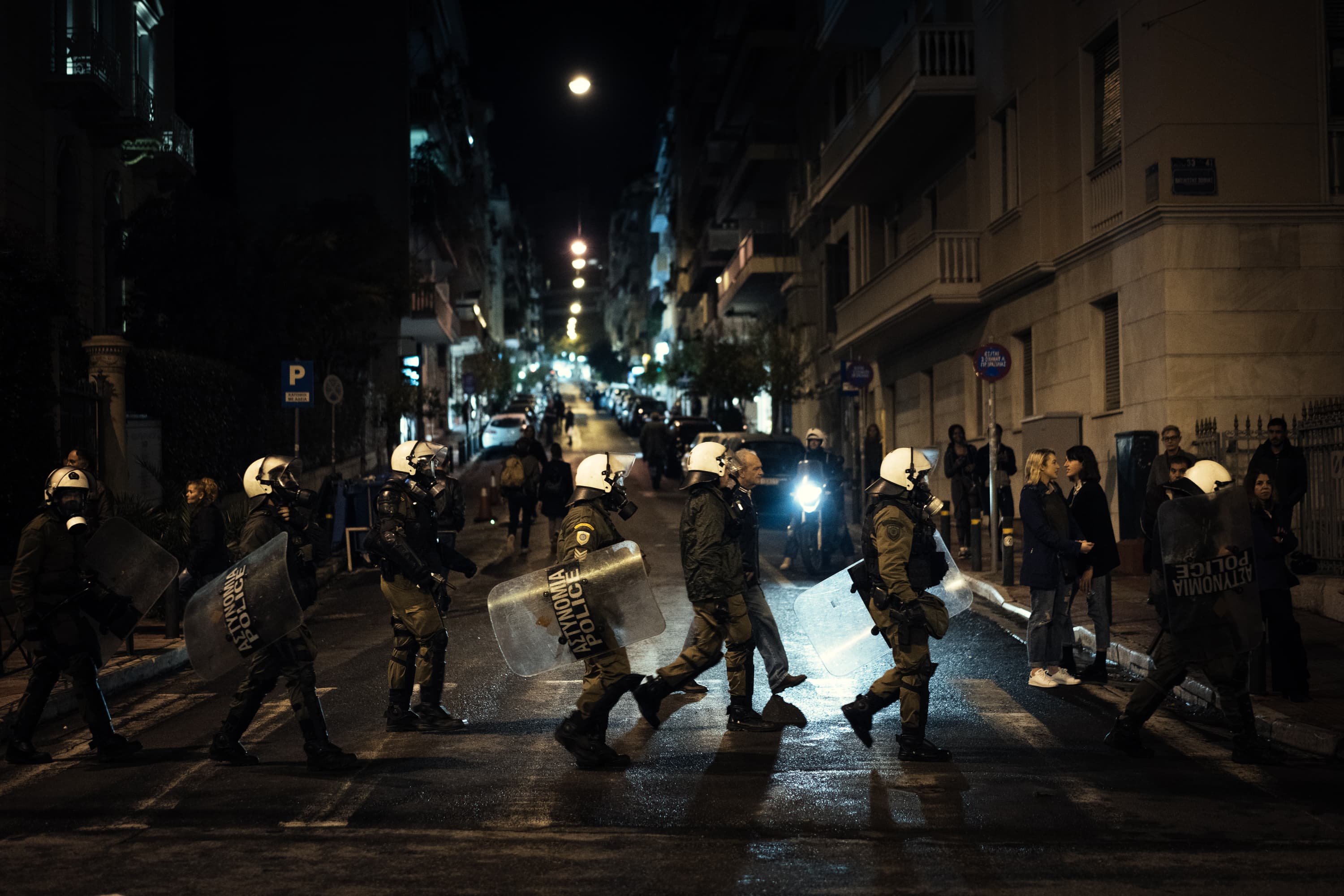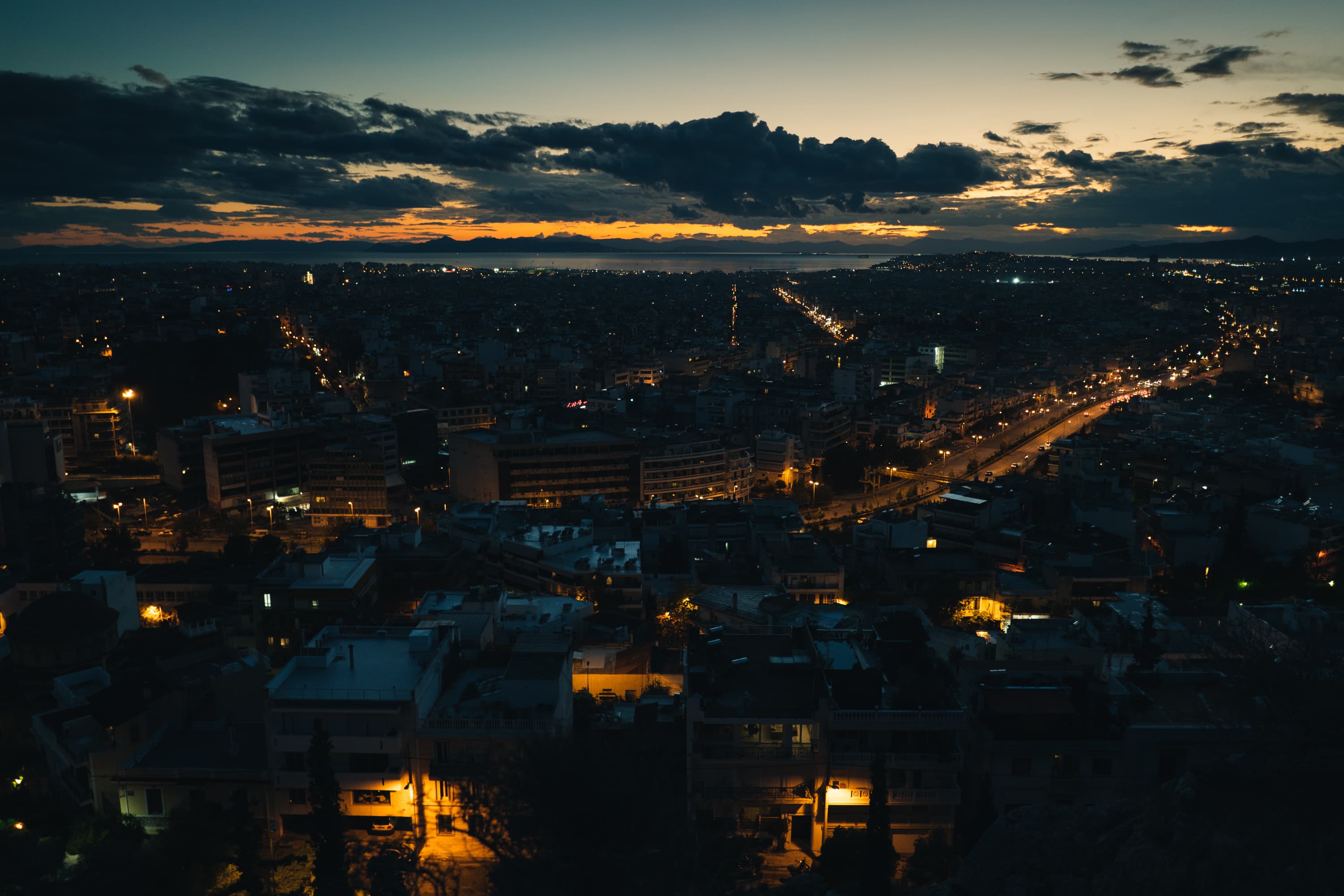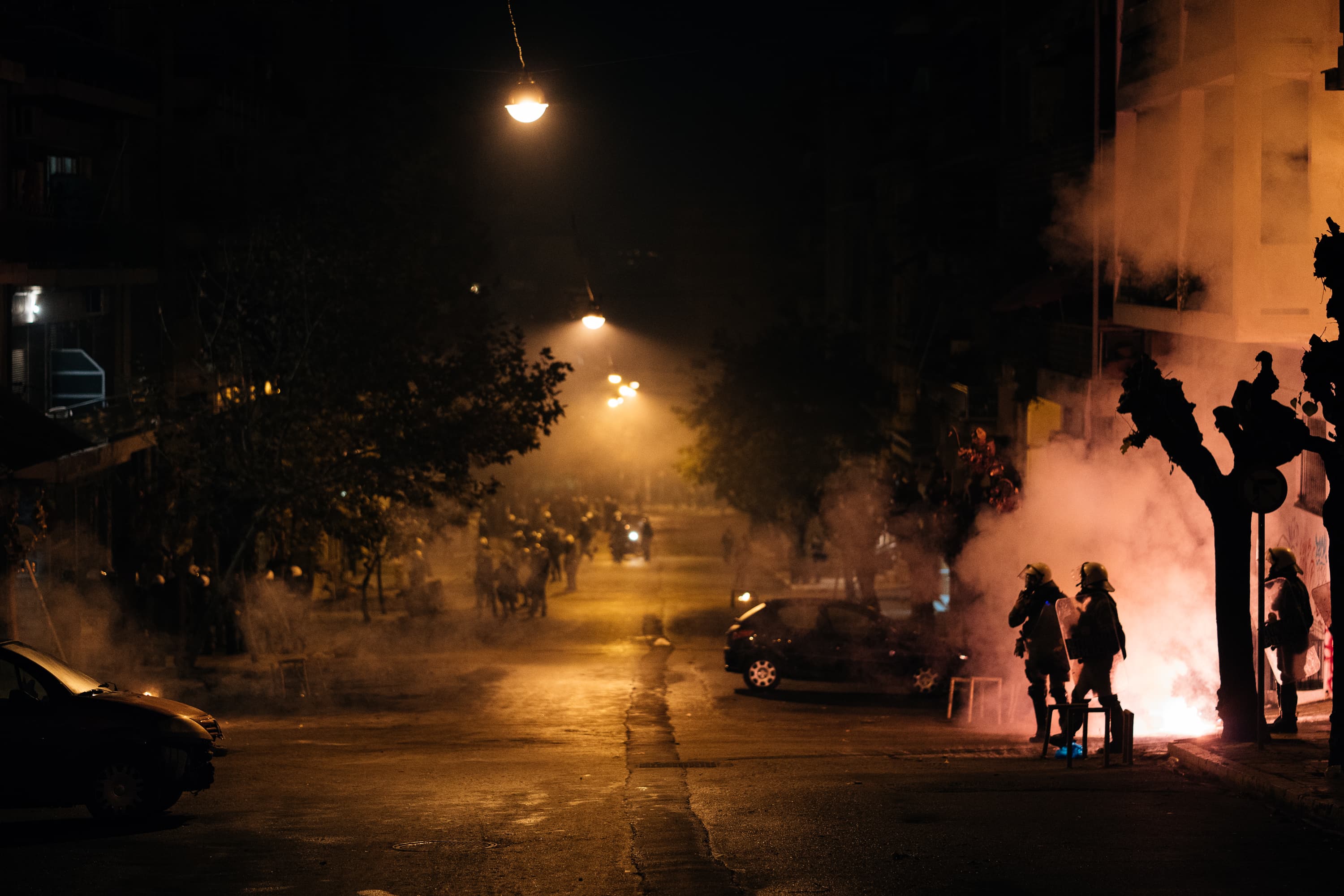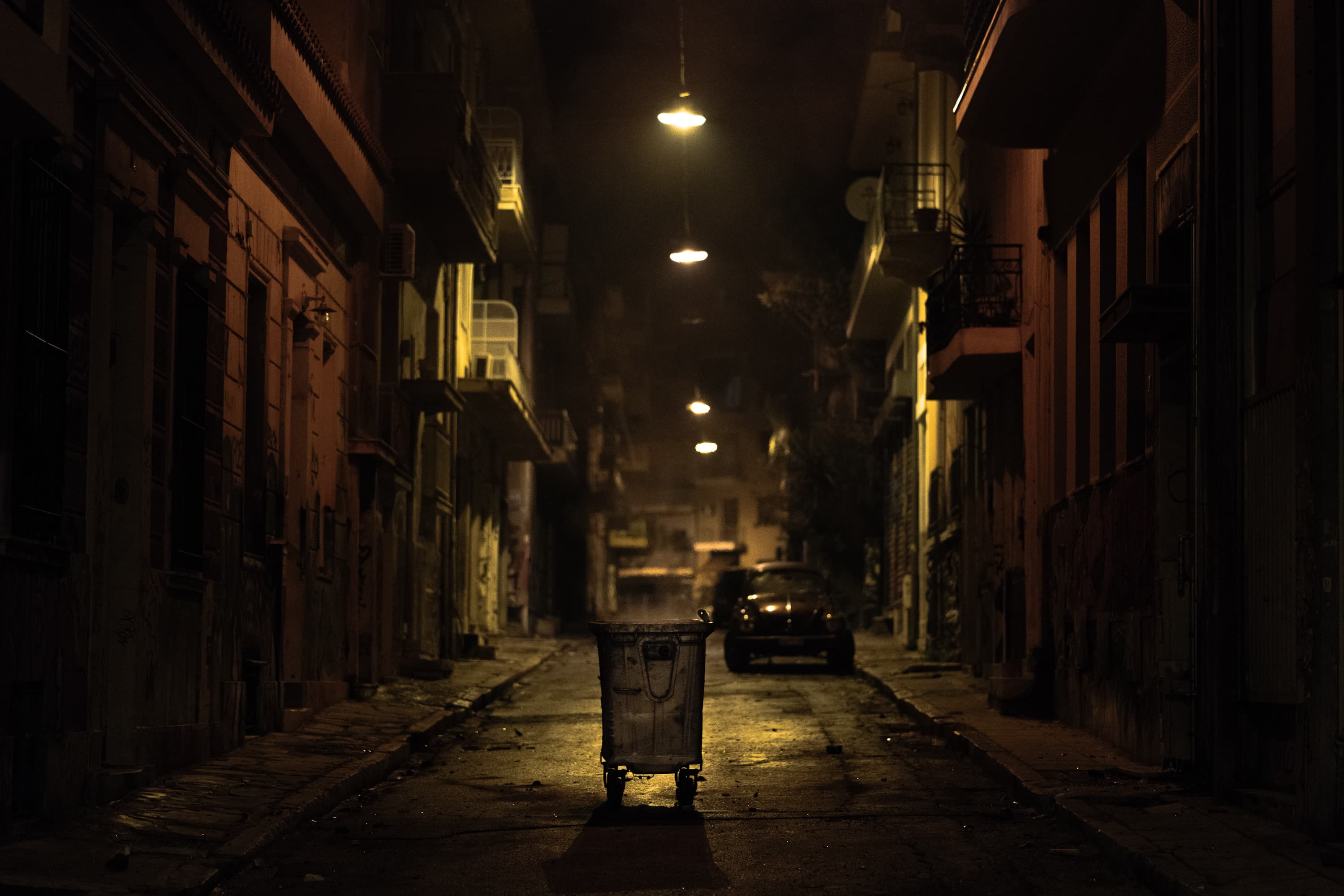On December 6, 2008, a Greek police special guard shot and killed 15-year-old Alexis Grigoropoulos within blocks of the Athens Polytechnic University, leading to the largest protests in Greece since the end of the dictatorship in 1974. Protests originated in Exarcheia and the neighborhood continued to be the epicenter of demonstrations as they spread across Athens.
In the aftermath of the riots, collectives and movements in Exarcheia expanded initiatives experimenting with new political formations, especially to provide public spaces organized around an anti-hierarchical and anti-commercial ethos. For example, activists turned a parking lot into the guerrilla Park Navarinou, which hosted events such as ticket-free movie screenings and anti-consumerist fairs. The Sporos collective developed solidarity economies through trade and sale of Zapatista-produced goods, and the Skoros collective promoted re-use, recycling, and sharing practices. Other new and renewed political formations in the neighborhood included producer or consumer cooperatives and collective kitchens.
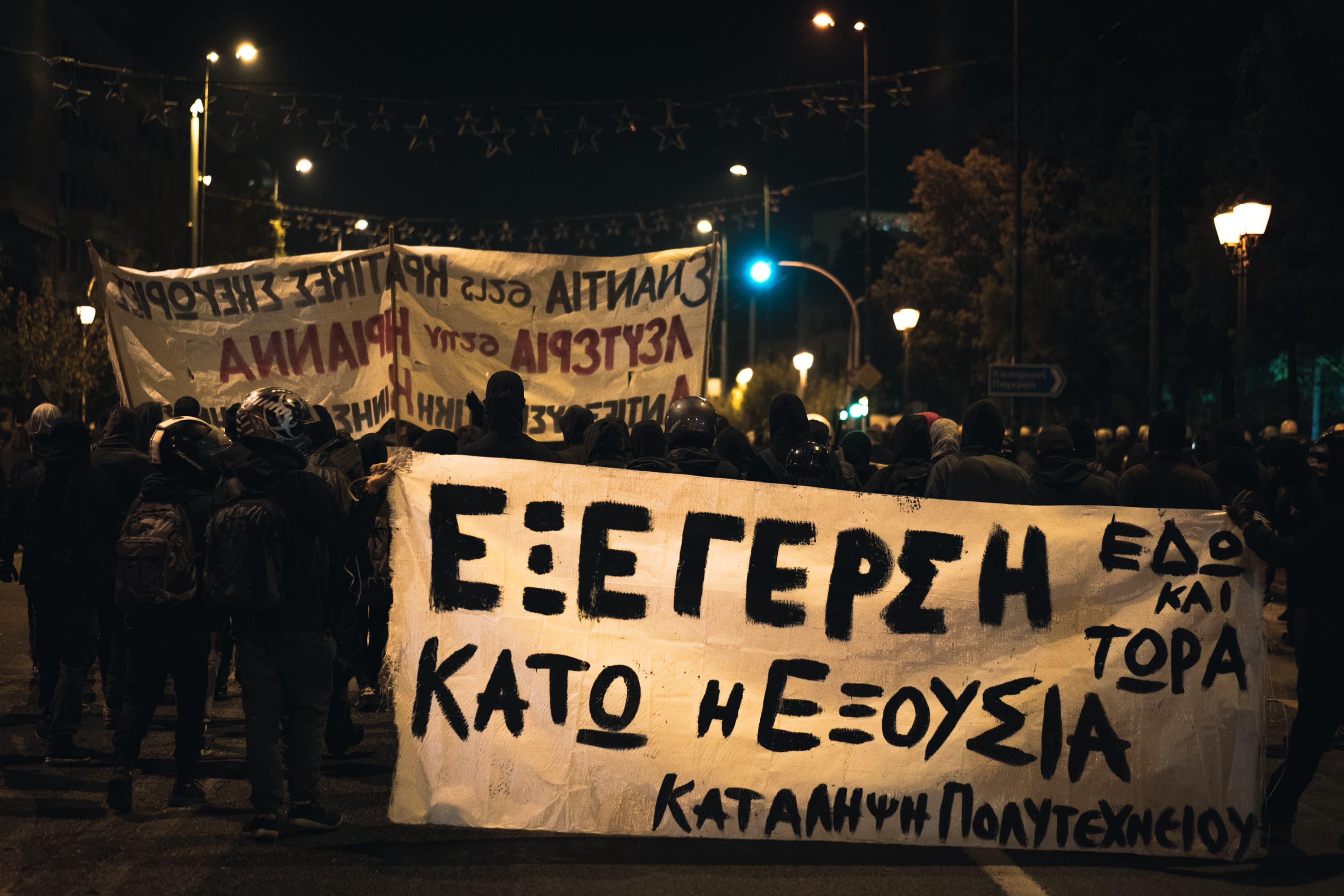
During my time in Athens I stayed in Exarchia, the anarchist part of town. The police wouldn’t go, just have checkpoints on some of the streets leading in, basically was there was no police in the hood at any given time.
On one of my earlier wanders a policeman guarding the outskirts questioned my presence. I was just about to enter and he asked me what I was doing, that did not raise the mood. Graffiti everywhere, kids coming from all over to paint. Some people camping in the main plaza. Still, everything would function normal, people, shops, cafes, tourists, murals, feeling somewhat safe… all good. It was pretty chill except for the few days of the protests.
Athens is famous for it’s demonstrations which would take place all over the city but concentrate around the Exarchia neighborhood towards the evening and night. This was my neighborhood so I was in for experiencing the “cat and mouse” game the protesters play with the police (or the other way around) first hand. Quite hilarious, the protesters would throw something here, then run over there, avoiding the teargas and the police. The protestors would mingle and hide with the “normal crowd” in the main square, and rush out to start new fronts from there. The police would answer in their ways but it seemed as if nobody really wanted to hurt anyone, yet both sides needed to do their “thing”. During the days leading to the main protests the locals barricaded their homes, mostly windows, preparing for the riots. Black clothes, hoods and surprisingly TNF were the dress code, so it was super easy to blend in. I hid the camera most of the time and kept my distance to everyone even if it involved running. The police wasn’t shy to cover the whole place in teargas, which, to that extent, was a first for me. Oh what a joy to have your face, especially the wet parts, burn like hell, very demotivating. And don’t touch it.
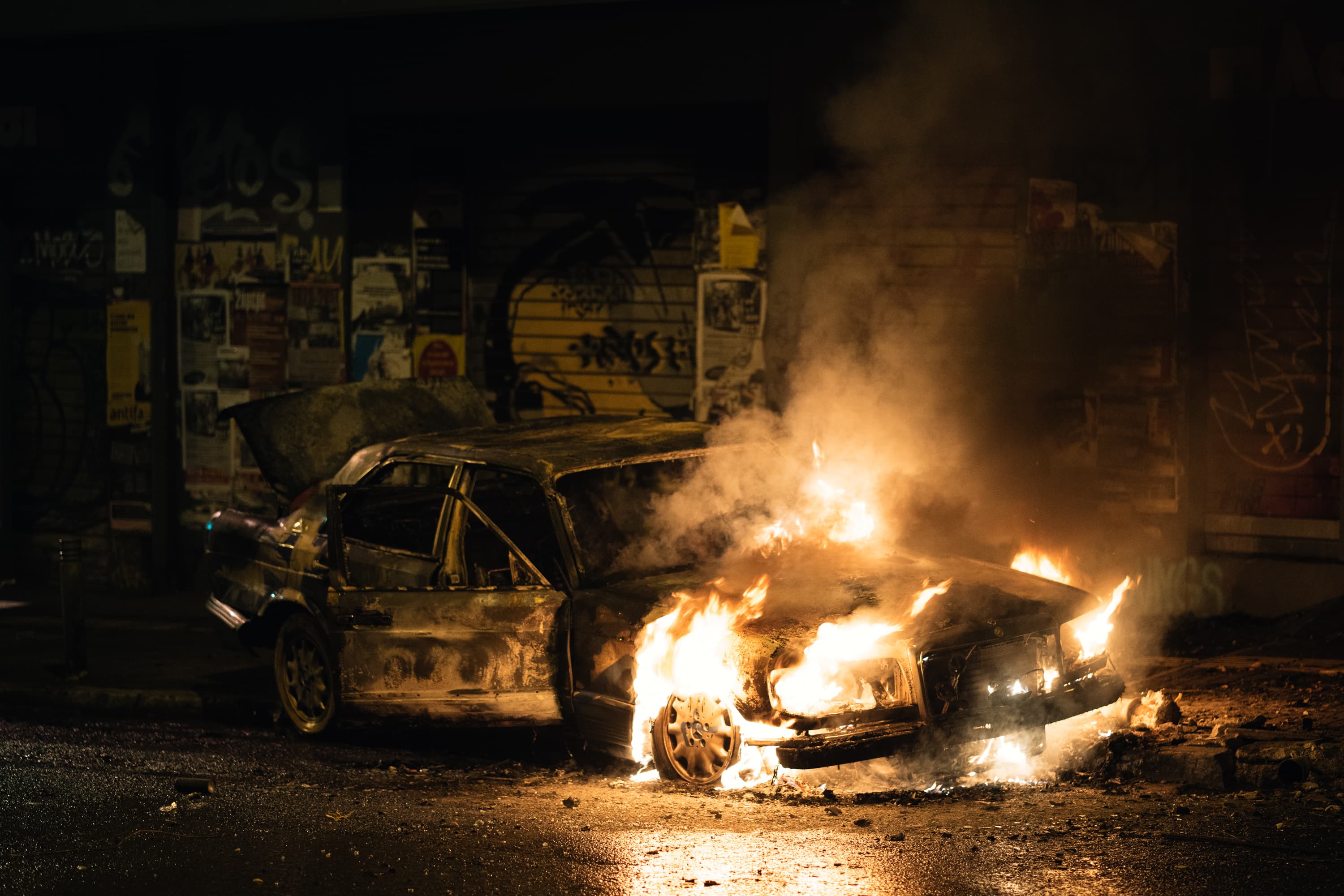
Burning Mercedes, November 2017, Athens, Greece
I had to run for this one. After walking a bit too far into the danger zone and getting very excited about the burning Mercedes some of the protestors noticed and came running at me. Time to go.
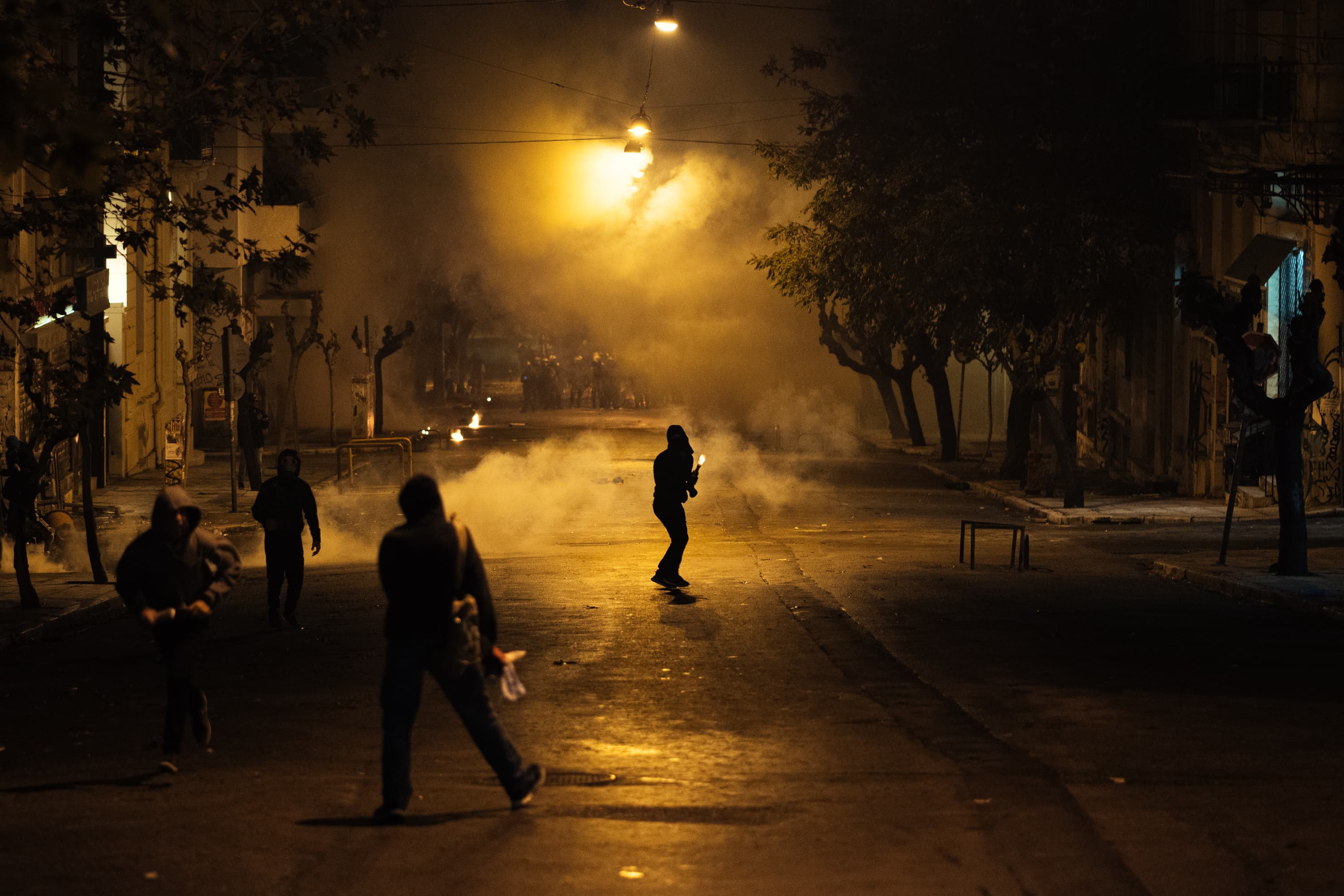
Drop it like its hot, November 2017, Athens, Greece
Kind of in the distance, but kind of right there. Looking through the cloud you can see the police on the other side whilst that guy decides to throw a Molotov-cocktail right at them. YOLO. Smoke grenades, tear gas, flash bangs being used by the police to keep their play interesting.

